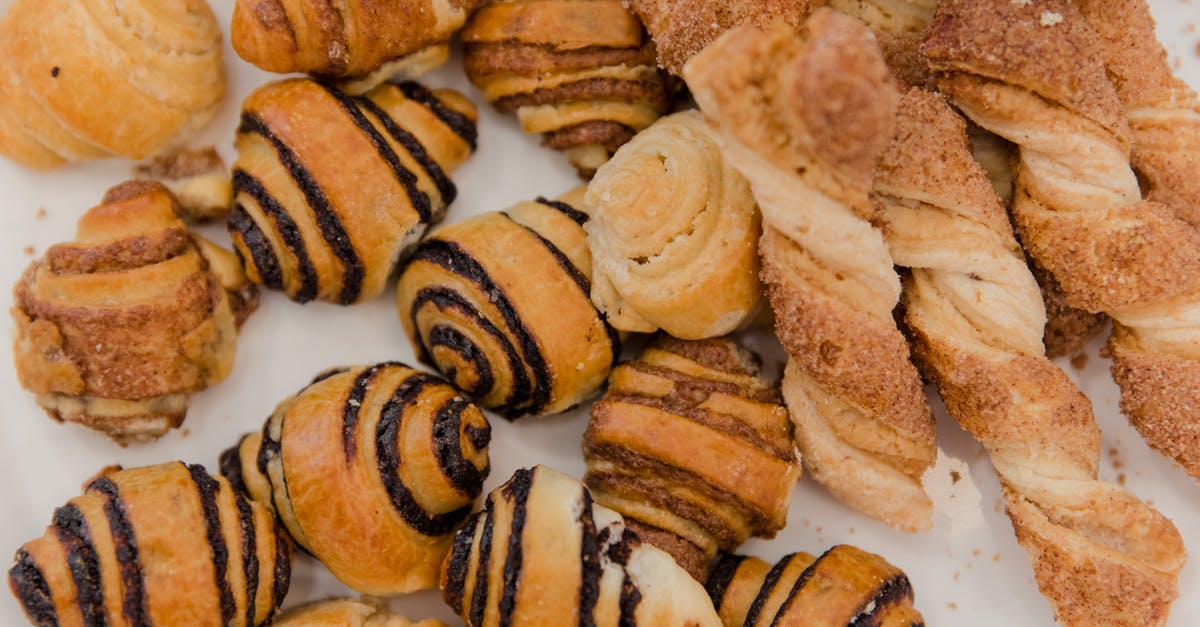What causes the crown of the bread to crack during baking?

What causes the crown of a bread loaf to crack as it bakes?
I would like to prevent it.

Best Answer
Disclaimer: I'm not too familiar with the english technical terms, but I'll try and explain what's happening without them.
Watch a shaped bread during the final rise:
- Right after shaping, the interior is still dense because the co2 bubbles from the yeast haven't developed yet. The surface is firm and the shape round(-ish), if you poke gently with a finger, the indentation springs back instantly.
If you'd bake the bread now, it would be dense, heavy and probably a bit soggy. This is called "under-proofed". Your top will most likely not crack as the bread won't expand much in the oven, but the results are far from optimal. - After while, your bread will have risen, expanded and the interior texture is filled wit small bubbles. The surface has become a bit softer and the loaf might have flattened a bit in comparison to height. If you poke the loaf, the indentation slowly fills back until almost to the top. The yeast will still be active and could expand the loaf more if the loaf is left to rise.
If you bake the bread now, it has the potential for a maximum of "oven spring", which is an increase in volume during baking. Steam in the oven or baking in a dutch oven will allow your bread to do so even better. Your bread is basically guaranteed to crack unless you direct the expansion via controlled weaknesses in the outer layer, either by slashing the loaf or by having already (during final shaping) folded your loaf with a seam for ripping and then baking with the seam up. - If you continue to proof your bread, it will reach a point from which it will start do deflate again. If poked, the indentation remains. During baking, it will not rise (much) more and will tend to "flow" outwards and collapse. If you puncture or slash your over-proofed loaf, you will make this worse, rather like a punctured balloon.
If your goal is to get a non-cracked bread, you can put the loaf in the oven once it's fully proofed, just before over-proofed. This requires a lot of practise as you will basically have to monitor the bread towards the end of the final rising. You will also need to make sure that the loaf remains humid and pliable, you want as little of a dried skin as possible to allow for expansion without cracking. Poke the loaf all over with a chopstick or a paring knife to catch larger air bubbles that may cause the crown to burst locally and brush the bread with water before placing it in the oven.
Much easier is to bake at the second stage and plan for the expansion. There is a post here that discusses the influence of different cut patterns on the final shape and a bit more on the reasons for slashing here. Rule of thumb: the closer you are to "fully proofed" and the less oven spring you expect, the shallower your cuts should be. For a lot of oven spring, you need deeper cuts, usually made almost horizontally up to an inch in depth.
Should you be talking about a different kind of cracking, namely lots of small cracks that resemble the cracks on some glazed pottery and that appear during cooling: That is considered a sign of quality for some recipes.
Pictures about "What causes the crown of the bread to crack during baking?"



Quick Answer about "What causes the crown of the bread to crack during baking?"
Dough is Too Wet or Too Dry If your dough is too dry it can form a crust before it had time to rise in the oven. This will cause the crust of your bread to crack and let the air out of the bread wherever it cracks and expand those cracks into bigger cracks or “bursts”.How do you fix cracks in bread?
Cracking is caused by insufficient elasticity, which is usually caused by insufficient moisture. Adding more moisture into the recipe would almost certainly help you out there. You can go with a 70% dough hydration for example, utilizing the stretch and fold technique to achieve stability.How do you keep dough from cracking?
One or two cracks can be fixed by brushing with water and rolling the edges together to seal. Next time, allow the dough to warm up slightly if very cold and roll as evenly as possible near the edges to prevent cracking. Dough was kneaded too much after the water was added. Or, the dough wasn't relaxed after rolling.10 Brilliant Bread Baking Hacks (save money and bake better bread)
More answers regarding what causes the crown of the bread to crack during baking?
Answer 2
The crown is the first thing that sets when you put the bread in the oven. Then, as the center of the loaf heats up, it rises and cracks the top, which has already set. I don't think you can prevent it completely, unless you change your recipe to a denser kind of bread that doesn't rise very much while baking. Otherwise, I find that you can minimise cracking by baking the bread at a slightly lower temperature, and placing a bowl of water in the over to add some moisture. Be warned though, both of these actions will change the final texture of the bread, making it denser.
Answer 3
What you are describing is the result of 'oven spring'. When a properly proofed piece of dough is placed in a hot oven it will begin to expand or spring. If the the oven is dry or the skin is not sliced it will set rather quickly, resulting in cracks.
There are two things that affect how quickly the skin sets:
- Steam
- Slicing the skin
Steam allows the crust to remain moist during the first part of baking so that it may stretch and expand.
- Boil an inch or two of water on the stove, then place it in the oven when you put the bread in. If there is still water in the pot in the last 15 minutes of baking, remove it.
- Spritz your loaf and the inside of the oven with a water spray bottle right when you add the loaf to the oven. Watch out for the steam!!
Slicing the top of the loaf with a razor blade allows the loaf to expand further because it reduces how the crust constrains the loaf. A couple of diagonal slices is popular on long loafs. A cross is popular on round loafs.
Answer 4
If you increase the volume of a closed container which can't expand anymore, it will cause the container to break because there is no more space to expand unless the container gives way. This is what happens with bread. The top becomes fixed in shape as it looses moisture and looses its ability to expand. When the inside part expands, the lack of space will cause increased tension on the surface and at one point the surface will crack i.e. give way.
You can minimize random cracking by intentionally scoring the bread. This will help the gas which evolves to escape without causing expansion of the bread, thus preventing any cracks forming.
However you should be aware that this will decrease the volume of air inside bread thus the bread will be denser.
Sources: Stack Exchange - This article follows the attribution requirements of Stack Exchange and is licensed under CC BY-SA 3.0.
Images: Kunsulu Saurtaeva, RODNAE Productions, Nourishment DECODED, RODNAE Productions
